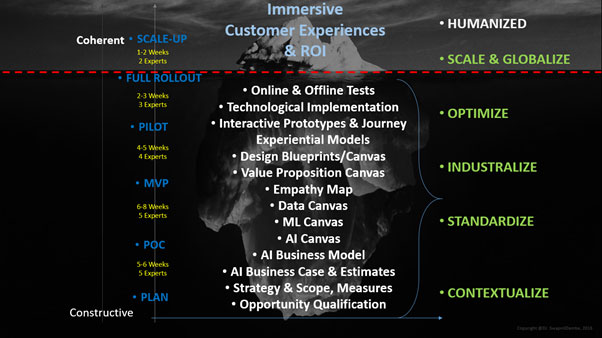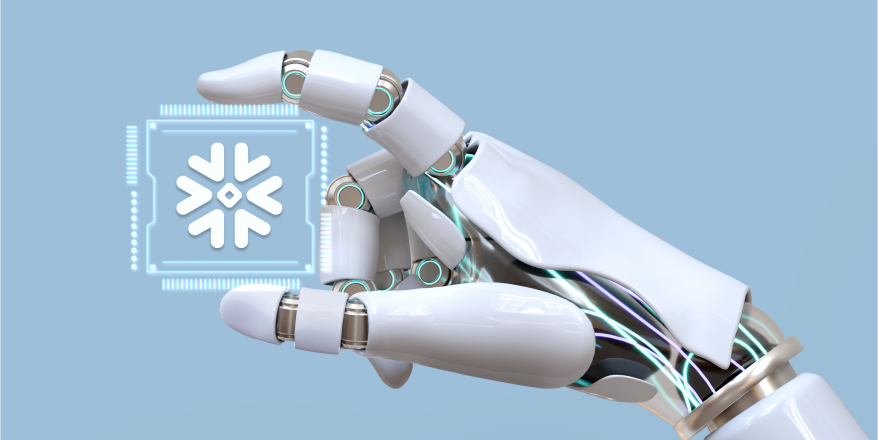In Part-1 of this blog series I discussed how Electricity (Form of Electrical Energy) evolved to mass adoption, similarly AI is the new form of energy in the business world. Businesses are finding their ways to adopt and infuse this energy to enhance growth and market capital. AI is a noticeably new aspect for production, precise utilization of human capital and overall business innovation. It has already gained significant credibility through disproportionate business impact it has created within certain industry verticals (BFSI, Healthcare, Retail, CPG etc.). In order to realize the economic & economical potential within AI Solutions space, the need of the hour is to carefully model it with the help of tangible strategic acumen & contextual research. I believe, AI is nothing but “Hyperactive Energy” which can be generated and suitably utilized for the betterment and development of society at large.
First, let’s acknowledge the fact that there is lack of right talent to produce economical AI solutions that can drive large impact. The idea is to help enterprises bring scale and processes for their AI Solutions, whether it is in the form of Products, Enterprise Systems or Services. In my experience of building transformational solutions I feel around 50% of the time needs to be spent up-front in building AI Strategies, around 35% in Design and Build, rest 15% in contextual assessment of AI Solutions with stakeholders. However, in reality due to market pressures the time spent is almost reverse. Enterprises tend to spend lot more time in technology, product design and implementation, the strategy aspect is almost forgotten thus leading to lower adoption (if not complete failure) of the product. In my opinion, the major reasons for the AI products to fail or unable to scale-up are lack of:
- AI Strategy – for the enterprise, product or solution
- AI Business Model & Value Propositions
- Human(User) Friendliness across AI based Product/Service journey
- Accurate insights on targeted customers & context
- Combination of right team & work
Given the social impact any AI product or a solution will have, problems need to be solved with human centric approach than the traditional system development style.
Let’s see the bird eye view of producing scalable AI Solutions by optimally utilizing time, efforts & money. The diagram below is a general guideline with structured steps i.e. Budget, Cost, Time and efforts for modelling AI Solutions at high level. The parameters are expected to vary based on the context and AI Scope of work.

Most business and technology executives, value the outside, independent consulting viewpoint on what parts of their business might essentially relate and employ AI, Machine Learning (ML) in solving their business problems. The business problem needs to be qualified, does it really require AI? A problem solver approach is highly recommended in the context of the AI space and thus requires involvement of AI Researchers, Scientists & Strategists to qualify the business opportunity for AI at the first stage. If the business problem is exclusively handled by just structuring a set of “Conditional” coding rules there is no need to implement AI/ML forcefully. Secondly, if there is no availability of accurate practices/patterns to achieve intended business goals through specific problem statement, then AI/ML may not be the best option . Moreover, the right approach is to determine the Human Performances for intended task/s, which is to be replaced/performed by machines. With this approach, one can easily regulate the underlying economics & economical values of fitting AI/ML in the specific business context w.r.t Cost, Time, Efforts Saved and Tangible Value Gained in terms of ROI.
The AI Services offered in the market today, are generic or I would say narrow applications of AI to solve or automate a specific process or event. No doubt they are the best in solving very specific problems such as recommending, predicting or optimizing. However, such Solutions have limited real world application and does not exploit the complete potential of AI. To broaden the spectrum of applications where AI can proliferate, one needs to see smart, self-driven or high performance Machines that are able to function at uncertain/unclear and frequently fluctuating scenarios & context. This would help unlock the real potential of AI and thus lead to wider adoption and common good of the society.

